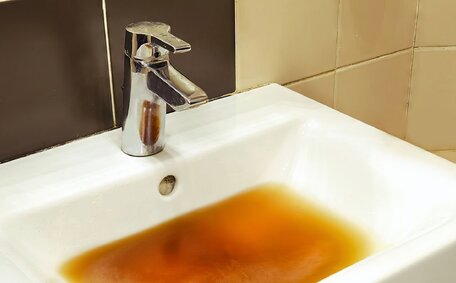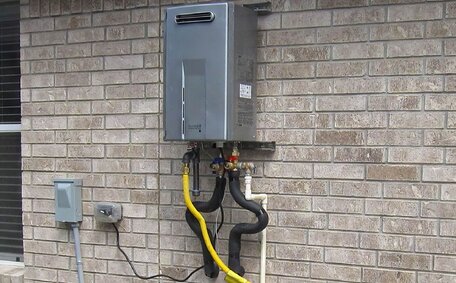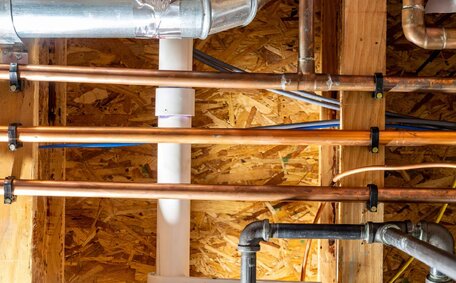Introduction to Relighting Your Water Heater’s Pilot Light
Having a reliable hot water supply is vital, and knowing how to manage minor issues yourself can save on costs and inconvenience.
It’s not unusual for a gas water heater’s pilot light to go out, disrupting your hot water supply. Relighting the pilot is usually a straightforward process that homeowners can tackle themselves with some simple guidance.
In this article, we’ll cover the necessary safety steps to take before relighting your water heater’s pilot light. We’ll also offer some basic troubleshooting tips in case the pilot fails to stay lit.
We’ll guide you through a clear, step-by-step process to access the pilot assembly, ignite the pilot—whether through manual or electronic ignition—ensure it stays lit, and finally, re-establish the water heater’s gas supply.
While relighting a pilot light is usually simple, we’ll emphasise critical precautions like checking for gas leaks and ensuring work areas are ventilated. We’ll also advise on when it’s necessary to call a licenced gas technician. Follow these guidelines and you’ll be enjoying hot showers again in no time.
Safety Precautions Before Relighting
When relighting your water heater’s pilot, safety should always be the top priority. Taking simple precautions protects you and prevents accidents or injuries.
Before getting started, check the area around the water heater for any gas smells. Make sure there are no open flames present. Proper ventilation is critical, so open doors or windows if working in an enclosed room.
Locate the gas control knob on the water heater and turn it clockwise to the 'OFF’ position. Wait a minimum of 5 minutes to clear the area of any residual gas, ensuring a safe environment to relight the pilot. Wearing safety glasses is also advised during the entire pilot lighting process.
By following basic safety measures, you’ll avoid potential hazards when attempting to relight your pilot light. We can now move onto the hands-on process confidently.
Locating the Pilot Light Assembly
The next step is locating the pilot light assembly within your water heater. There will typically be an access panel with a label indicating ‘pilot light’, ‘thermocouple’ or other related terms.
Remove the access panel, adhering to all safety measures. Look for the pilot light’s small metallic nozzle which should be directed towards the ignition source. It may help to shine a flashlight for better visibility.
This is the pilot light.
Pilot light configurations can vary slightly between brands and models. Check your owner’s manual if you need further assistance finding it. Some manufacturers also have online video tutorials demonstrating the process.
Once you’ve positively identified the pilot assembly to relight your pilot, take note of key components like the ignition button, thermocouple sensor and pilot light itself. We’ll refer to these next during the hands-on relighting process.
Understanding Pilot Light Components
The pilot light assembly consists of several key components that work together to keep the flame lit and regulate water temperature:
- Gas Control Valve - This allows gas to flow into the pilot light and main burner. It can be turned on or off using the control knob.
- Piezo Igniter - The push button that creates a spark to light the pilot when pressed.
- Pilot Light - The small flame that is kept constantly lit in order to ignite the main burner.
- Thermocouple - The sensor that detects if pilot light is lit and signals the gas control valve to stay open or close.
- Thermostat - Monitors water temperature and communicates with gas control valve to maintain the desired heat setting.
Understanding the interaction between these components is key to troubleshooting pilot light problems. The thermocouple and gas control valve work together to ensure gas flows only when the pilot light is active.
Step-by-Step Guide to Relighting
After ensuring safety measures are met and locating the pilot light assembly, the relighting process can begin. Here is a step-by-step guide to relight your pilot:
- Confirm the gas control knob is rotated fully clockwise to the 'OFF’ setting.
- Remove the access panel to expose the pilot light assembly if you haven’t already.
- If equipped, push down the reset button of the thermocouple for 30 seconds (check manufacturer’s guide).
- Look for the piezo igniter button and pilot nozzle inside the assembly. The nozzle will have a small opening directed at the pilot light thermocouple bulb.
- Gently push and turn the gas control knob anticlockwise to 'PILOT’, holding it for 5-10 seconds to clear the gas lines and enable gas flow to the pilot nozzle.
- While holding the knob in 'PILOT’ position, press the piezo igniter until the pilot flame lights, then continue to hold for another 60 seconds.
- If equipped with an electronic ignition button instead of manual piezo, press and hold ignition button for 60 seconds or until pilot stays lit.
- Release the gas control knob. If the pilot extinguishes, try igniting it again; a well-lit pilot shows a sharp blue flame.
- Ensure the pilot flame is steady for 60 seconds after releasing the knob before turning it counterclockwise to the 'ON’ position.
- Reattach the access panel and set the gas supply valve to 'ON’.
- Confirm the pilot remains ignited. If it doesn’t, start from step one again, ensuring the gas lines are ventilated.
Adhering to these instructions should enable you to successfully relight the pilot light and restore your hot water supply.
Testing and Verifying Successful Ignition
The critical step after ignition is ensuring the pilot stays lit before reassembling the water heater.
Monitor your pilot flame closely for about 60 seconds after releasing the gas control knob from the ‘PILOT’ position. The flame should burn steadily with a sharp blue colour, indicating proper operation.
Certain heaters come with an indicator light on the gas control valve or thermocouple. If available, observe this light to ensure it remains on constantly, signalling the pilot is still ignited.
Should the flame extinguish or the indicator light deactivates, recommence the lighting sequence from the beginning. Continue troubleshooting until the pilot stays lit.
Once you’ve confirmed the ignited pilot is stable after 60 seconds, turn the gas control knob to ‘ON’. Then replace the metal access panel and turn on the external gas supply to the appliance again.
Visually confirm that the pilot flame remains consistently blue. Your water heater is now successfully relit and ready to supply hot water to your home once more.
Troubleshooting Common Pilot Light Issues
Despite meticulously following procedures, you might face challenges in relighting the pilot. Below we provide solutions for typical issues encountered:
Pilot Light Won’t Stay Lit
If the flame extinguishes quickly after releasing the knob, here are some steps to guide you to a solution:
- Make sure you held the gas control knob in for a full 60 seconds during ignition before releasing.
- Check that the thermocouple bulb is directly in the pilot light’s flame path.
- A thermocouple requiring replacement may not keep the valve open.
- There could be a safety interlock tripped due to overheating or a closed flue.
Ignition Spark Failures
If pressing the igniter doesn’t produce a spark, consider these corrective steps:
- Check that the igniter wiring is intact and properly connected.
- Ensure protective cap has been removed from the piezo igniter.
- The igniter crystal may need replacing if worn out or damaged.
- For electronic units, replace weak batteries if applicable.
If pilot problems persist, seek professional help to avoid gas leaks or other hazards.
Seeking Professional Assistance
If you have carefully followed all the troubleshooting steps but are still unable to relight the pilot or resolve the hot water supply issue, it’s time to call in a professional.
With 15 years of experience, Vaucluse Plumbing expertly handles troubleshooting and repairs for all gas water heater types in Vaucluse and Sydney wide. Our licenced and insured plumbers have the expertise required for resolving pilot light and ignition issues.
Our team is equipped with the necessary tools to safely examine your system, identify issues, and accurately relight a malfunctioning pilot light. We’ll also be able to advise if repairs or parts replacements are needed to get your hot water flowing reliably again.
For urgent assistance from our professional plumbers, contact Vaucluse Plumbing today on 1300 349 338. Or you can email us and we’ll be in touch to schedule a convenient appointment.
As a locally-run family business, we are dedicated to delivering friendly and transparent service. We’ll always explain any issues in simple terms and provide upfront pricing so you can make informed decisions.
Get your hot water worries resolved promptly and properly. Call the trusted professionals from Vaucluse Plumbing when you need some extra help.






